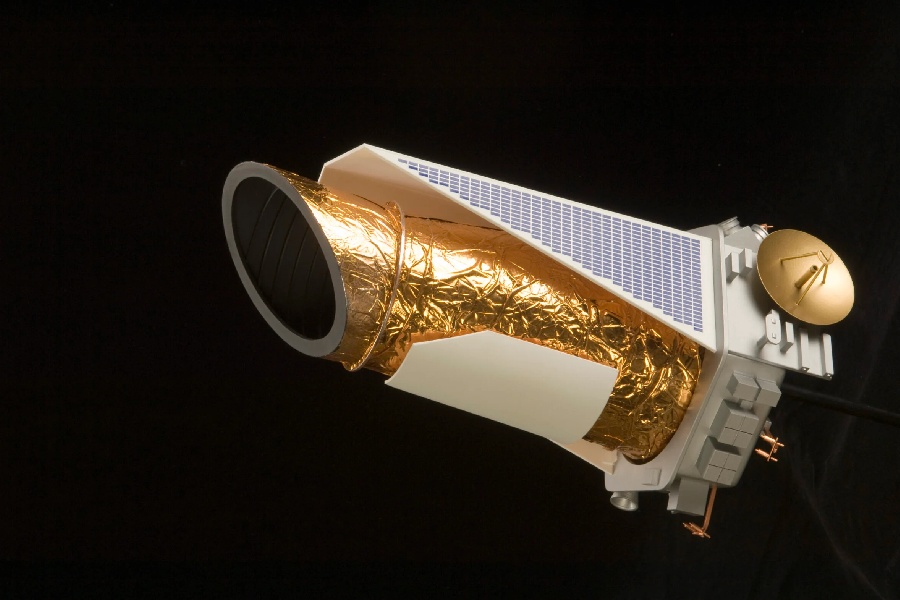In the vast expanse of the cosmos, Kepler stands as a pioneering marvel, offering humanity a unique window into the mysteries of the Universe. But what is Kepler exactly, and how it became important in the discovery of thousands of planets? This revolutionary NASA space telescope has uncovered exoplanetary mysteries perplexing astronomers since its launch in 2009. This article is going to delve into Kepler’s groundbreaking design, origin, technological intricacies, and ongoing research efforts of the Kepler space telescope.
By the article’s end, you’ll appreciate how Kepler’s riches of findings establish baseline statistics suggesting billions of exoplanets likely exist just in the Milky Way Galaxy alone – with implications that life elsewhere may be common!

What Is Kepler Telescope And Its Origin?
Kepler grew from a special 1996 Discovery Program call emphasizing lower-cost projects yielding high scientific impacts through focused goals versus general capabilities. After decades of refining transit photometry approaches, confirmation of the first exoplanet in 1995 justified ramping efforts to discover many more alien worlds.
Following selection in 2001, then launch delays, Kepler launched in 2009 to census exoplanet demographics across a fixed star-dense field via ultra-precise photometry.
Over four prolific years, Kepler delivered unprecedented insights into exoplanetary abundances. After this initial mission, Kepler was reoriented to the ecliptic plane for the K2 extended mission.
But, what is the Kepler mission? The Kepler Space Telescope is a pioneering astronomical observatory launched by NASA in 2009 on a mission to discover exoplanets. Named after the renowned and legendary astronomer, this space telescope was launched with the primary objective of detecting billions of hidden exoplanets, i.e., planets orbiting stars outside our solar system, many of which could be promising places for life.
Kepler identifies exoplanets through the transit method, observing slight periodic dips in a star’s brightness that indicate an orbiting planet is passing in front of it. Analyzing these transit patterns allows scientists to infer the presence, size, and orbital properties of planets across our galaxy.
Kepler’s ultra-precise measurements have enabled the groundbreaking detection of thousands of confirmed exoplanets so far. Its census provides unprecedented insights into the prevalence, variety, and possible habitability of planets beyond our solar system.
The technology behind the telescope
At the heart of Kepler’s success lies its advanced technology. Equipped with a photometer, Kepler detects exoplanets by monitoring the brightness of stars. The telescope’s precision and sensitivity are a result of its large field of view and the use of Charged Coupled Devices (CCDs) to capture high-resolution images. This technological prowess allows Kepler to detect the subtle dimming of a star’s light as a planet transits across its face, providing crucial data for identifying and characterizing exoplanets.
The telescope was a 3-foot diameter aperture telescope with a spacecraft built around it. The mirror of the telescope was 4 feet which is one of the largest ones to orbit around the Earth at the time.
Besides the camera array, there are other integrated technology assets. These other assets span transmission hardware, propulsion, and temperature modulation designs.
All these designs are crafted for Kepler’s distinct deep space positioning and objectives. Altogether, the meticulous technological scheme powers persistent analyses finding small rocky worlds to gas giants.
Reaction Wheels and Sun-like Star Hosts
Kepler relied upon four internal gyroscope-based reaction wheels to control the precise spacecraft orientation needed for consistent photometry recordings. After one wheel failed in 2012 and then a second in 2013, innovative piloting and pressure from sunlight succeeded in stabilizing operations using only two remaining wheels.
Before this, Kepler’s original fields focused on Sun-like stars as prime targets considered likeliest hosting potentially habitable rocky planets resembling Earth.
Over 160,000 main sequence F, G, and K-type stars similar in mass and temperature to our Sun initially anchored Kepler’s pioneering analyses, ultimately unveiling small exoplanet frequencies suggesting two or more planets orbit a typical Sun-like star.

Jet Propulsion Laboratory and Science Mission Directorate Involvement
NASA’s Jet Propulsion Laboratory enabled the Kepler mission as lead developer of the photometer instrumentation central to exoplanet detection through reviewing science objectives, issuing technology contracts, and then conducting payload performance verifications.
Meanwhile, NASA’s Science Mission Directorate managed preparations, including launch services acquisition, mission assurance protocols, plus coordinating communications and data infrastructure for receiving Kepler’s results via the Deep Space Network.
Both organizations contributed specialized expertise and responsibilities. Their contributions were critical for seeing an ambitious pioneer exoplanet census mission transpire. They aided the mission transpiring from initial risk assessments to successful operations that met desires for high science returns per the restricted budget.
Altogether, concerted JPL and SMD partnering actualized Kepler’s promise seeking statistics revealing planet formation prevalence beyond Earth.
Continued Research Efforts
Ongoing research
Kepler’s mission is far from over. While the telescope itself is no longer in operation, its legacy lives on through continued research efforts. The data collected by Kepler has paved the way for follow-up studies and missions, expanding our understanding of exoplanets and their potential for habitability. The wealth of information gathered by Kepler has become a cornerstone for future exploration and the search for extraterrestrial life.
Follow-up confirmation efforts continue vetting candidate discoveries in Kepler’s vast dataset. Additional work targets characterizing known exoplanet atmospheres and internal structures through advanced spectrographic analyses.
Current projects
Researchers at NASA Ames continue refining Kepler detections, leading confirmations like validating Kepler-1649c as an Earth-sized exoplanet in a habitable zone. Ames also conducts astrophysics simulation modeling to reveal insights from Kepler census data.
Meanwhile, the Cambridge Exoplanets and Habitability group under William Stenzel leverages Kepler-derived planet understanding unique science opportunities like biosignature gases and life detection methodologies while guiding more sensitive next-generation transit photometry mission concepts to build on Kepler’s successful pioneering foundation.
Earth-size Planets in Planetary Systems Similar to Our Own Solar System
Kepler’s Mission
Amid boundless detections, one central Kepler discovery goal focused on identifying potentially habitable Earth-twins around G-type main sequence stars matching our Sun’s stellar qualities.
Beyond confirming Earth-sized planet frequency generally, the Kepler space telescope provided foundational understandings by recognizing specifics supportive of life.
These specifics are orbiting distances, planetary sizes, and host star attributes. These foundational understandings support assessing habitability among Kepler detections.
While no perfect facsimile exists yet, approximate sister worlds in centered orbits of sun-like stars prime future atmospheric research efforts, gauging habitat potentials through sizes and locations indicative of liquid surface water chances given understood principles.
Conclusion
So, what is Kepler, and why did it become so important in the astronomical world? By discovering thousands of exoplanets through ingenious photometer precision methods, the Kepler space telescope proved that planets orbiting other stars are remarkably prevalent, diverse, and full of the possibility of life.
As Kepler continues revealing our universe’s astonishing scale through ongoing explorations, the foundations it established confirm Earth occupies just one of the likely trillions of worlds awaiting discovery across a spectacular cosmos.
Much as Johannes Kepler himself shifted paradigms to reshape cosmic comprehension, this namesake observatory’s wondrous revelations will lead astronomy ever outward in search of questions, not just answers, stirring awe about life’s chances among the stars.
